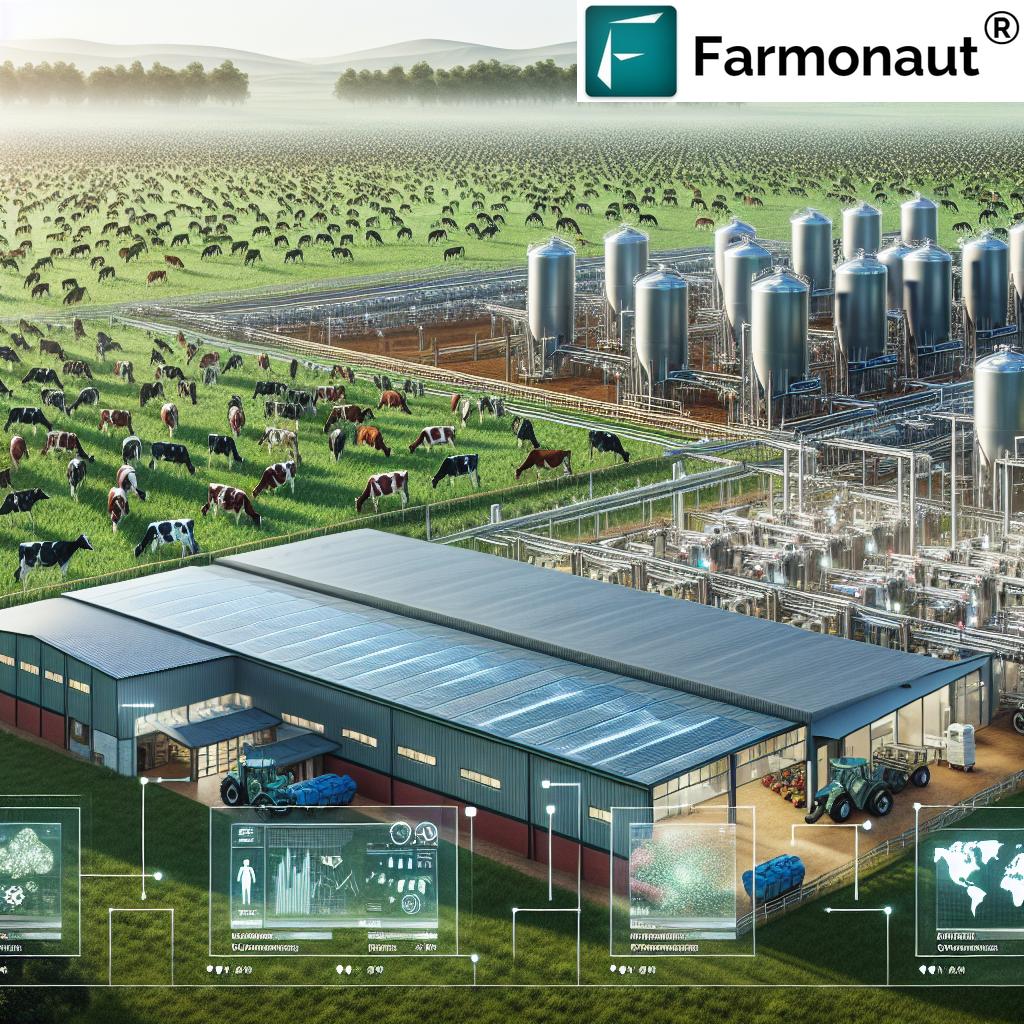Balancing Act: Australia’s Grain Import Policies and Sustainable Agricultural Innovation
“Australia’s grain industry balances biosecurity with global market access, impacting over 21,000 grain-producing farms nationwide.”
In the vast landscape of Australian agriculture, we find ourselves at a crucial crossroads where sustainable grain production and grain import policies intersect to shape the future of our industry. As representatives of the grain sector, we are keenly aware of the delicate balance required to maintain Australia’s agricultural integrity while embracing the opportunities presented by global trade. In this comprehensive analysis, we will explore how agricultural biosecurity measures are molding the landscape of grain trade, and how we can foster innovation to ensure long-term success.
The Grain Industry Landscape in Australia
Australia’s grain industry is a cornerstone of our agricultural economy, contributing significantly to both domestic food security and export revenues. With a diverse range of grains produced across the country, from wheat and barley to canola and pulses, our industry faces unique challenges and opportunities in an ever-evolving global market.
- Diverse grain production across various climatic zones
- Significant contributor to national export earnings
- Balancing domestic supply with international market demands
As we navigate the complexities of sustainable grain production and grain import policies, it’s crucial to understand the multifaceted nature of our industry’s challenges. From biosecurity concerns to market access issues, each aspect plays a vital role in shaping our approach to grain production and trade.

Agricultural Biosecurity: Safeguarding Australia’s Grain Industry
Agricultural biosecurity measures are the first line of defense in protecting Australia’s grain industry from external threats. These protocols are designed to prevent the introduction and spread of pests and diseases that could devastate our crops and threaten our export markets.
Key components of our biosecurity framework include:
- Stringent import protocols for grain and related products
- Rigorous pest and disease monitoring systems
- Collaborative efforts between government agencies and industry bodies
By implementing robust agricultural biosecurity measures, we not only protect our domestic production but also maintain our reputation as a supplier of high-quality, disease-free grain to the global market. This reputation is crucial for securing and maintaining international market access.
Grain Import Policies: Striking a Balance
Australia’s grain import policies are carefully crafted to balance the need for biosecurity with the benefits of international trade. These policies aim to protect our domestic industry while ensuring we have access to necessary grain supplies during times of shortage, such as drought years.
Key aspects of our grain import policies include:
- Phytosanitary requirements for imported grains
- Import risk assessments for new grain varieties
- Quarantine procedures for incoming shipments
While these policies may sometimes be viewed as restrictive, they are essential for maintaining the health and integrity of our grain industry. By carefully managing grain imports, we can protect our farmers from the introduction of new pests and diseases while still benefiting from global trade opportunities.
The Impact of Import Protocols on Grain Industry Profitability
Import protocols play a significant role in shaping the profitability of Australia’s grain industry. While these protocols are necessary for biosecurity, they can also affect market dynamics and pricing structures.
Factors influencing industry profitability include:
- Compliance costs associated with import regulations
- Market access for Australian grain exports
- Domestic grain prices in relation to global markets
By carefully balancing these factors, we can ensure that our grain industry remains competitive while maintaining the highest standards of biosecurity. This balance is crucial for long-term industry sustainability and profitability.
Innovation in Australian Agriculture: Paving the Way for Sustainability
Innovation is key to ensuring the long-term success and sustainability of Australia’s grain industry. By embracing new technologies and practices, we can improve productivity, reduce environmental impact, and enhance our competitiveness in global markets.
Areas of innovation in Australian agriculture include:
- Precision agriculture techniques
- Drought-resistant crop varieties
- Sustainable farming practices
One such innovative solution is provided by Farmonaut, a pioneering agricultural technology company that offers advanced, satellite-based farm management solutions. Their platform integrates cutting-edge technology with traditional farming practices, making precision agriculture more accessible and affordable for farmers across Australia.

“Australian grain exports contribute approximately $13 billion annually to the economy, highlighting the sector’s significance in agricultural trade.”
Global Market Access: Navigating Trade Agreements
Access to global markets is crucial for the prosperity of Australia’s grain industry. Agricultural trade agreements play a vital role in opening up new markets and maintaining existing ones. However, these agreements must be carefully negotiated to ensure they benefit our farmers and align with our biosecurity standards.
Key considerations in trade agreements include:
- Tariff reductions on Australian grain exports
- Reciprocal market access for trading partners
- Harmonization of phytosanitary standards
By securing favorable trade agreements, we can expand our export opportunities while ensuring that our domestic industry is protected from unfair competition. This delicate balance is essential for maintaining a thriving grain sector in Australia.
Sustainable Farming Practices: The Future of Grain Production
Sustainable farming practices are becoming increasingly important in the face of climate change and growing environmental concerns. By adopting these practices, we can ensure the long-term viability of our grain industry while meeting consumer demands for sustainably produced food.
Key sustainable farming practices include:
- Conservation tillage
- Crop rotation and diversification
- Efficient water management
Farmonaut’s satellite-based crop health monitoring system is an excellent example of how technology can support sustainable farming practices. By providing real-time data on crop health and soil moisture levels, farmers can make informed decisions about irrigation and resource management, leading to more sustainable and efficient grain production.
Challenges and Opportunities in the Grain Sector
The Australian grain sector faces numerous challenges, from climate variability to market volatility. However, these challenges also present opportunities for innovation and growth.
Key challenges and opportunities include:
- Adapting to changing climate patterns
- Improving supply chain efficiency
- Developing value-added grain products
By addressing these challenges head-on and seizing new opportunities, we can ensure the continued success and resilience of our grain industry. Technologies like Farmonaut’s API for satellite and weather data can play a crucial role in helping farmers and agribusinesses adapt to these challenges.
Freight Strategies: Optimizing Grain Transport
Efficient freight strategies are essential for maintaining the competitiveness of Australian grain in global markets. By optimizing our transport networks, we can reduce costs and improve the reliability of our grain exports.
Key aspects of freight strategy include:
- Investment in rail and port infrastructure
- Adoption of smart logistics technologies
- Coordination between growers, handlers, and exporters
Farmonaut’s fleet and resource management tools can contribute to more efficient grain transport by optimizing vehicle usage and improving overall logistics management. This technology integration can lead to significant cost savings and improved competitiveness for Australian grain exports.
Farm Safety and Spray Application Management
Farm safety and proper spray application management are crucial aspects of sustainable grain production. By prioritizing these areas, we can protect our farmers, minimize environmental impact, and maintain the quality of our grain products.
Key considerations in farm safety and spray management include:
- Implementation of robust safety protocols
- Proper handling and storage of agricultural chemicals
- Precision application technologies to minimize drift
Farmonaut’s satellite-based monitoring can assist in optimizing spray applications by providing detailed information on crop health and field conditions. This data-driven approach can lead to more precise and efficient use of agricultural inputs, improving both farm safety and environmental sustainability.
The Role of Technology in Shaping the Future of Grain Production
Technology is playing an increasingly important role in shaping the future of grain production in Australia. From precision agriculture to blockchain-based traceability, innovative solutions are transforming every aspect of the grain industry.
Key technological advancements include:
- Satellite-based crop monitoring
- AI-driven farm management systems
- Blockchain for supply chain transparency
Farmonaut’s comprehensive suite of tools, including their API Developer Docs, exemplifies how technology can be leveraged to address the complex challenges facing the grain industry. By providing real-time data and AI-driven insights, these technologies empower farmers to make more informed decisions and optimize their operations.
Balancing Import Policies with Domestic Industry Protection
Striking the right balance between welcoming imports and safeguarding local agriculture is a complex challenge. Our policies must ensure that domestic growers are protected from unfair competition while still allowing for necessary imports to supplement local production during shortages.
Key strategies for balancing these interests include:
- Targeted import quotas for specific grain types
- Seasonal adjustments to import regulations
- Support programs for domestic growers
By carefully calibrating our import policies, we can maintain a thriving domestic grain industry while ensuring food security and price stability for Australian consumers.
The Impact of Agricultural Trade Agreements on Local Growers
Agricultural trade agreements have far-reaching effects on local growers, influencing market access, competition, and pricing. While these agreements can open up new export opportunities, they can also expose our farmers to increased competition from imported grains.
Key impacts of trade agreements include:
- Expanded export markets for Australian grain
- Potential for increased competition in domestic markets
- Changes in grain pricing dynamics
To navigate these complexities, growers can leverage technologies like Farmonaut’s platform to enhance their productivity and competitiveness. By utilizing data-driven insights and precision agriculture techniques, Australian farmers can maintain their edge in both domestic and international markets.
Australian Grain Import Policy Impact Matrix
| Policy Measure | Biosecurity Impact | Market Access Effect | Domestic Industry Protection | Innovation Potential | Sustainability Score |
|---|---|---|---|---|---|
| Phytosanitary Requirements | High | Medium | High | Medium | 8/10 |
| Import Quotas | Medium | High | High | Low | 6/10 |
| Trade Agreements | Low | High | Medium | High | 7/10 |
| Pest Risk Assessments | High | Low | High | Medium | 9/10 |
| Seasonal Import Adjustments | Medium | Medium | High | Medium | 8/10 |
Conclusion: Embracing a Sustainable Future for Australian Grain
As we navigate the complex landscape of grain import policies and sustainable agricultural innovation, it’s clear that a balanced approach is key to the long-term success of Australia’s grain industry. By carefully managing biosecurity risks, fostering innovation, and engaging in strategic trade agreements, we can ensure that our grain sector remains competitive, sustainable, and resilient in the face of global challenges.
The integration of advanced technologies, such as those offered by Farmonaut, will play a crucial role in this journey. By leveraging satellite-based monitoring, AI-driven insights, and blockchain traceability, we can enhance our productivity, sustainability, and market competitiveness.
As we look to the future, let us embrace the opportunities presented by innovation while remaining steadfast in our commitment to protecting Australia’s agricultural heritage. Together, we can build a grain industry that not only feeds the nation but continues to be a leader in the global agricultural landscape.
FAQ Section
- Q: How do Australia’s grain import policies affect domestic farmers?
A: Australia’s grain import policies aim to protect domestic farmers by maintaining strict biosecurity measures and regulating import volumes. These policies help prevent the introduction of pests and diseases while ensuring fair competition in the domestic market. - Q: What role does technology play in sustainable grain production?
A: Technology, such as Farmonaut’s satellite-based monitoring systems, plays a crucial role in sustainable grain production by optimizing resource use, improving crop health monitoring, and enhancing overall farm management efficiency. - Q: How do agricultural trade agreements impact Australia’s grain industry?
A: Agricultural trade agreements can open up new export opportunities for Australian grain producers but may also increase competition in domestic markets. These agreements are carefully negotiated to balance the benefits of market access with the need to protect local industries. - Q: What are some key sustainable farming practices in grain production?
A: Key sustainable farming practices in grain production include conservation tillage, crop rotation, efficient water management, and the use of precision agriculture technologies to optimize input use and minimize environmental impact. - Q: How does Australia balance biosecurity concerns with the need for grain imports?
A: Australia balances biosecurity concerns with grain import needs through strict phytosanitary requirements, import risk assessments, and quarantine procedures. These measures allow for necessary imports while protecting the country’s agricultural sector from external threats.




















